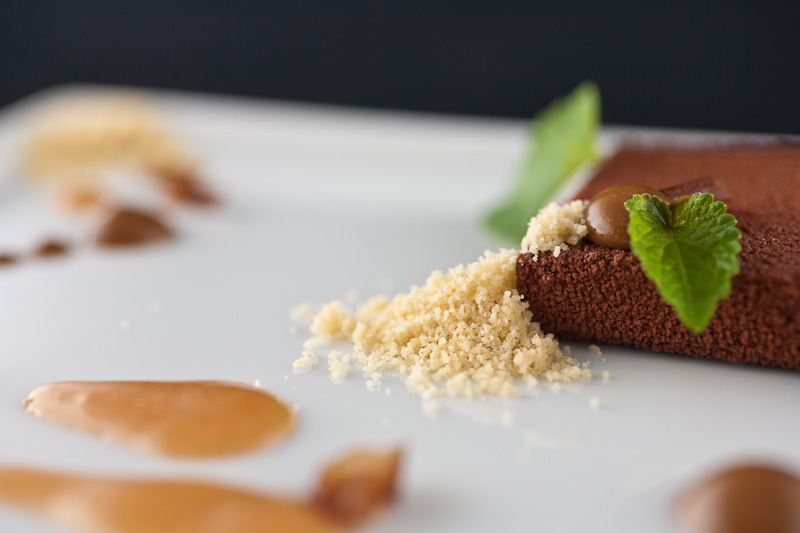
“Hi, I’m Johnny Knoxville, and this is the Alinea Project.”
This is what was going through my head while I was loading hot melted chocolate into a paint sprayer in preparation of painting chocolate onto my dining room table. It was totally, totally 100% awesome to the max so hard.
Let me back up for a minute here though and give you the setup: a mixture of chocolate, milk, honey, and vanilla is frozen into sort of a chocolate ice cube, at which point its sprayed with an atomized layer of chocolate from a paint sprayer. When refrigerated, the inner chocolate melts into a thick chocolate milk consistency while the outer chocolate stays solid, forming a delicate, lattice shell. This is plated and garnished with bitters toffee, chocolate sauce, candied dandelion root, banana powder, anise hyssop, and chicory root pudding.
It is awesome.
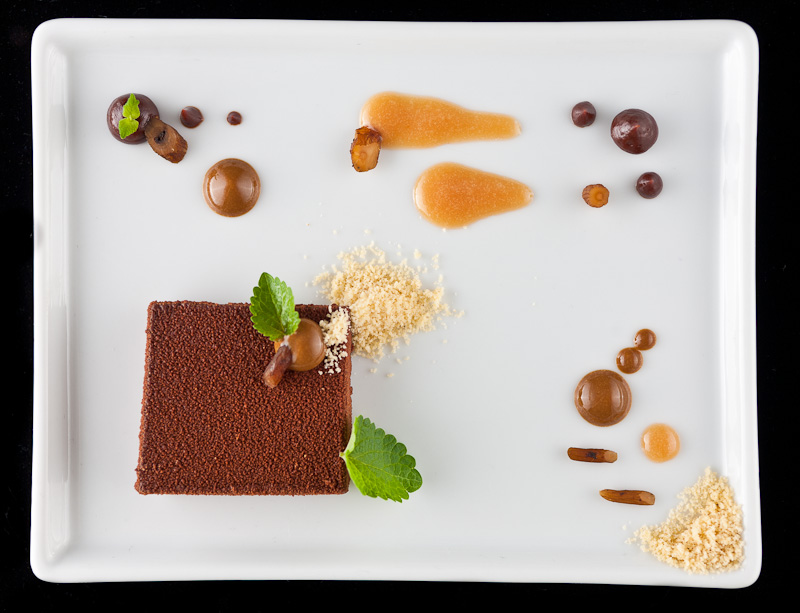
I’ll start with the badass part first. As soon as I read that there were power tools involved in this recipe, a rush of giddiness washed over me and I knew I wanted to really try to hit the photography side of things hard. I’ve been incredibly envious of the photos I’ve seen from Modernist Cuisine; despite not being able to afford the tome itself, pictures on the internet are incredibly inspiring. I knew I wanted to come up with a way to capture the actual spraying of chocolate. I also knew I needed a spray hood.
So I decided to try to make both at once; I bought some corrugated plastic and a sheet of plexiglass at Home Depot, along with some white duct tape, and went about building a see-through spray hood that I could shoot through as I was spraying. Here’s how that turned out:

The corrugated plastic is awesome; it’s semi-translucent, so it would work similarly to my light tent when photographing through it. Some strategic flagging off of lights in the apartment and you can’t really see the plexiglass sheet that’s on the rear side of the chamber.
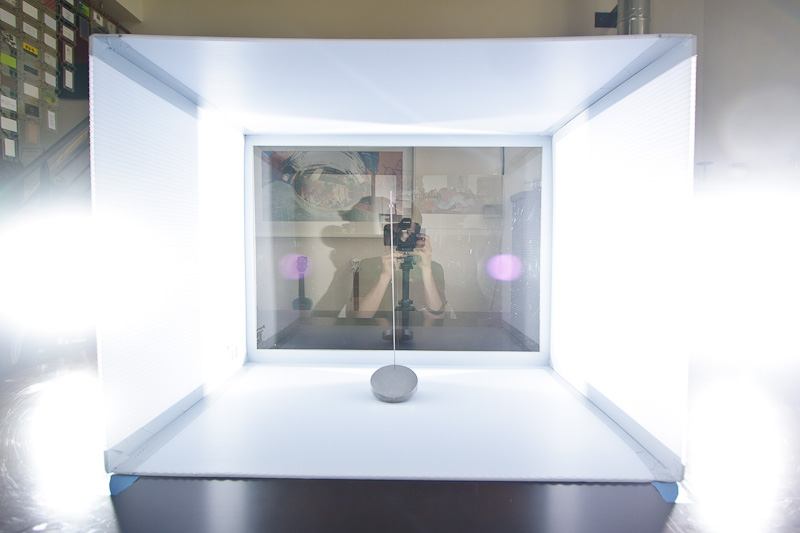
I also bought a small-scale paint spray gun at Home Depot as well. It’s designed for spraying small projects like chairs or cabinets. Given that these chocolate squares are about 2.5″ wide, I wanted something small and low-powered to do this. This Wagner gun was the cheapest offered at Home Depot, and worked great. I spent about a week sterilizing and cleaning the various parts before lubricating with grapeseed oil in preparation of pumping something edible through it.
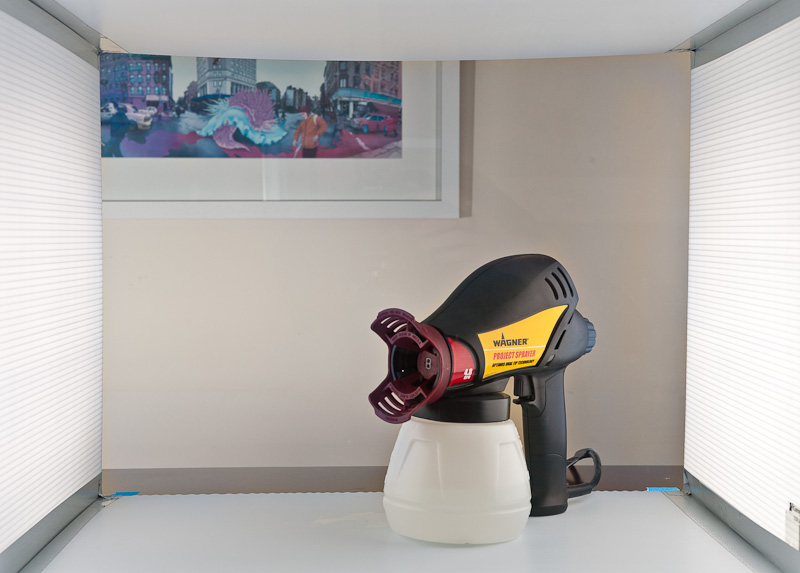
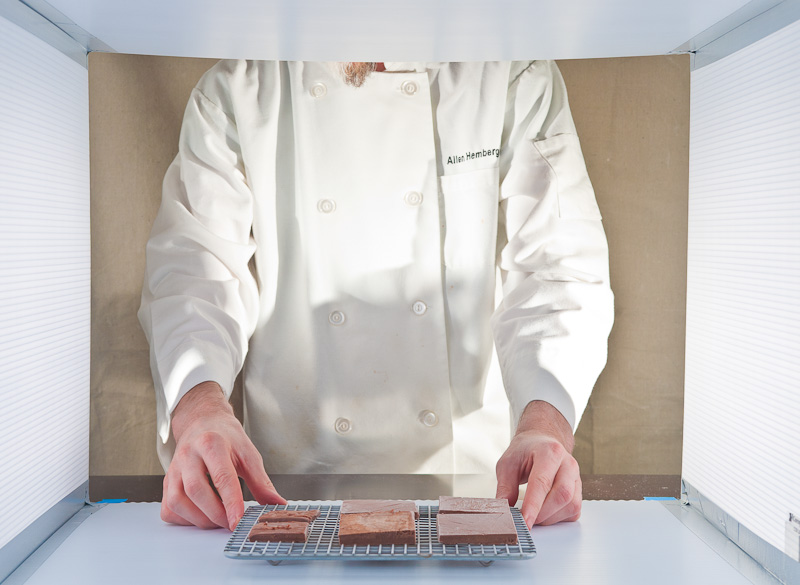
Next came the squares themselves. Cooking and setting these was pretty straightforward; the book doesn’t specify but I aimed for a thickness of about 3/8″ to 2.5″ square. I froze them, then set them on a frozen wire rack (pre-cooling stuff when working with chocolate makes life easier, I discovered).
Then, the paint gun.
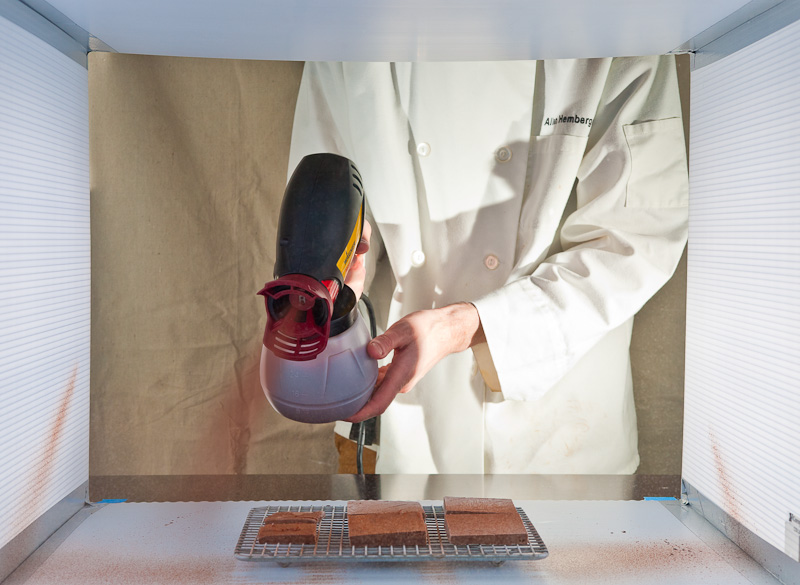
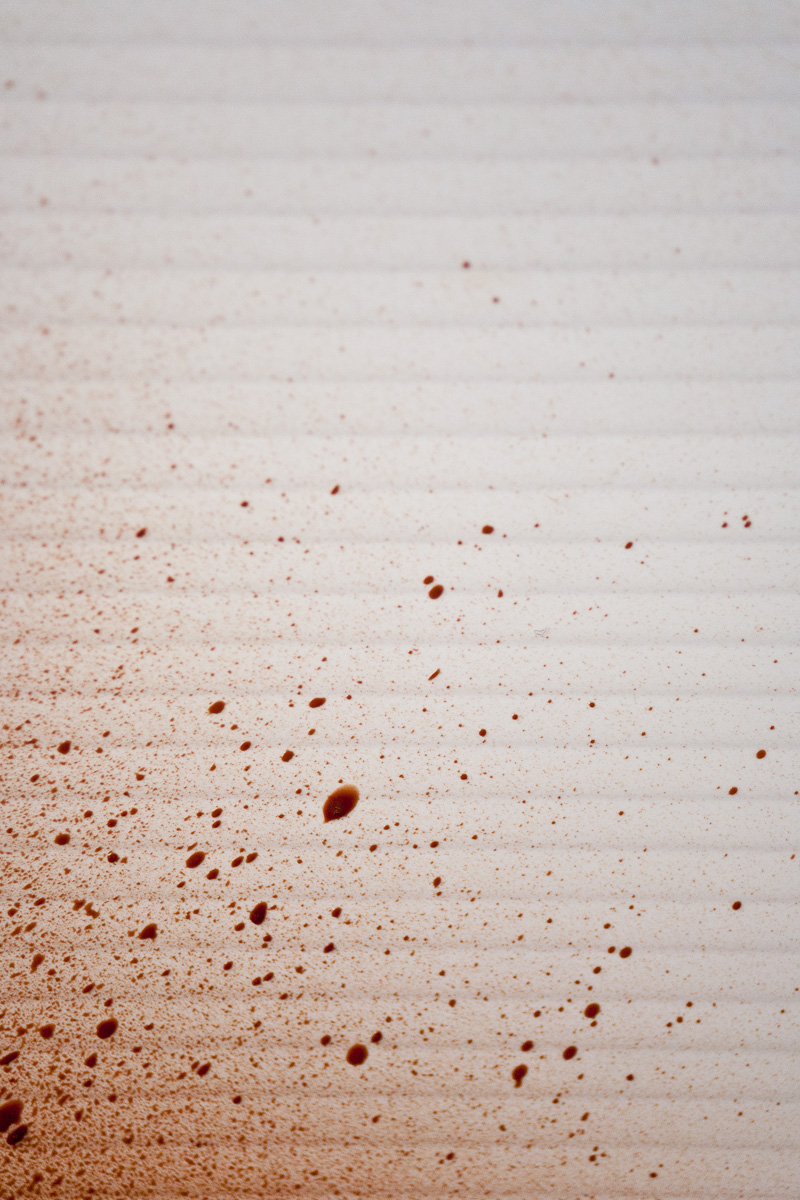
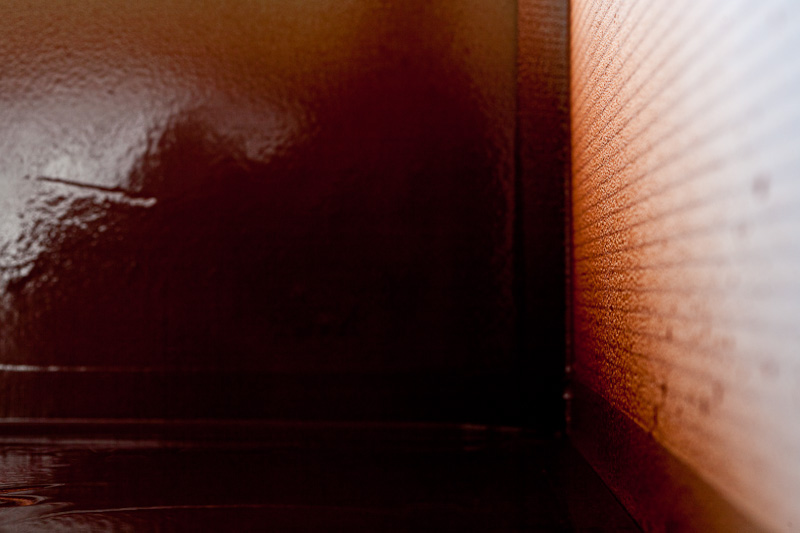
The spraygun gave a velvetlike, delicate lattice once set. So pretty and cool.
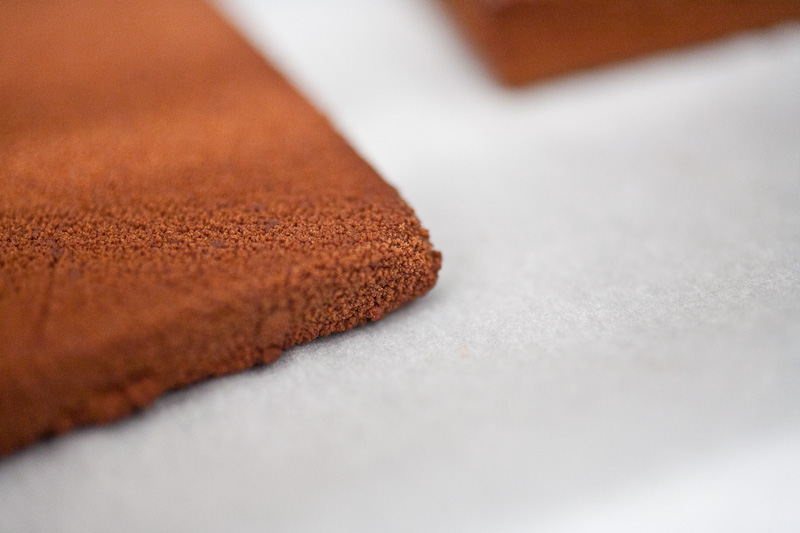
I thought the inside of the spray chamber looked so cool that I decided to try using it to shoot everything else after the chocolate inside had set. This recipe uses three root extracts: licorice, dandelion, and chicory. I found all three at my new favorite store: Lhasa Karnak. Luddite website aside, this herb store has EVERYTHING: bulk herbs, spices, essential oils, extracts…it’s amazing, and the staff is incredibly knowledgeable and helpful. For the chicory and the licorice, I’m meant to use freeze-dried powdered extract. Both of these proved very difficult to find, so I had to improvise. Lhasa Karnak mentioned they had liquid extracts of licorice and sometimes (but not currently) chicory (they called them ‘tinctures’). I went ahead and bought the licorice, then came home and decided to do some reading to try to understand what the difference was between a tincture and an extract. What I learned:
–a Tincture is an alcohol-based extraction technique whereby herbs/roots are soaked in a partial alcoholic solution to dissolve essential components from the herbs/roots. A common example of this is soaking vanilla beans in vodka to make ‘vanilla extract’. No heat is involved in making a tincture, which preserves volatile components and preserves ‘medicinal’ qualities (I didn’t care about this as much as I cared about flavor)
–a Tisane is a heat-based water-extraction technique used with herbs. In simple terms: herbal tea. Hot water is poured over herbs to release volatile compounds. A tisane is basically an infusion, except its specifically limited to herbal-based extractions.
–a Decoction is a heat-based water-extraction technique typically used with roots; sort of like making a tea with herb roots, except the roots are boiled for a period of about 10 minutes to fully extract volatile compounds.
My licorice extract was a tincture, and was sweet and relatively mild (I could taste a drop of it without it blowing my face off from bitterness). I ended up using an amount to taste, which was fun (I was making it up and learning as I went). The licorice was used in the Chocolate Sauce; it didn’t end up tasting ‘licorice-y’, but added an earthy, robust fullness to the sauce that was tough to describe but definitely noticeable. I liked the subtlety.
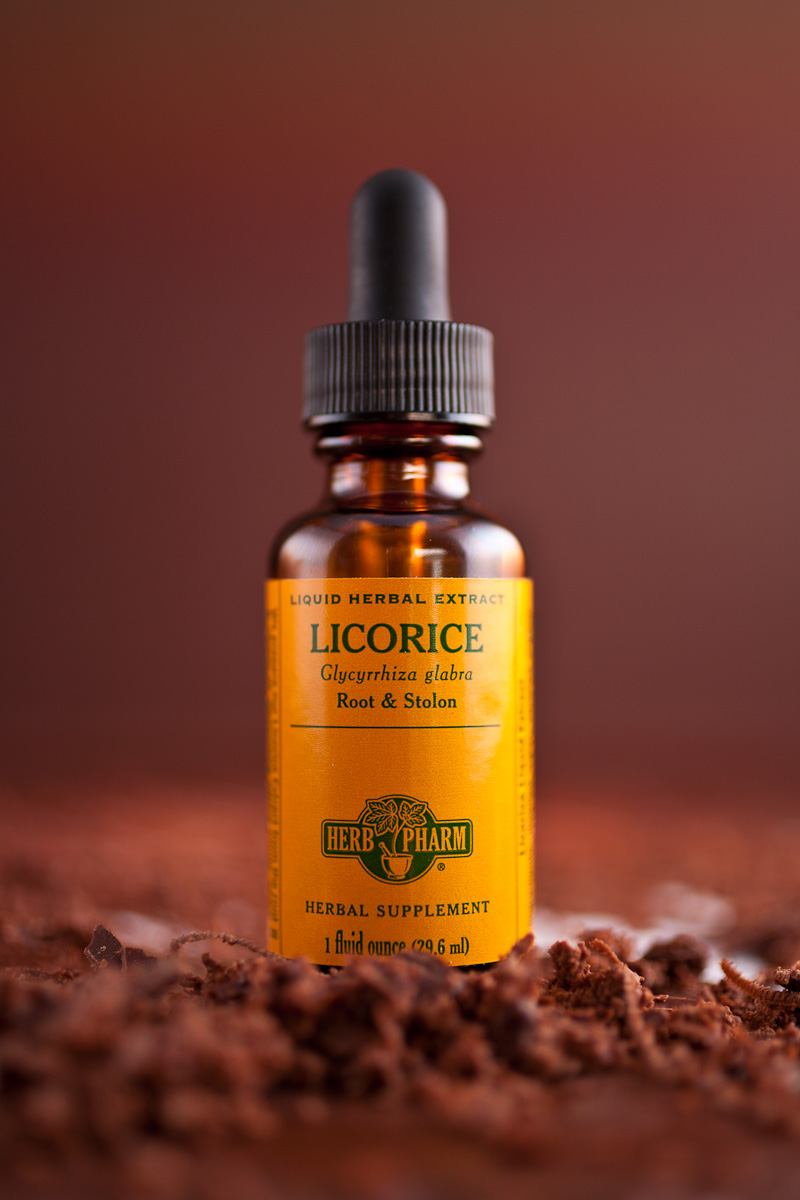
Lhasa Karnak sold chicory root in raw and roasted forms. Chicory is often used as a coffee substitute, and is most-frequently found in roasted form. The recipe calls for “freeze-dried chicory extract”, but didn’t describe whether this extract was roasted or not. Someone at Lhasa Karnak explained to me that extracts made from raw chicory root tasted bitter and sweet and earthy, whereas the roasted root gave extracts that tasted roasted, robust, and coffeelike. I didn’t know really what I was aiming for, so I bought some of both, brought them home, and boiled both in two different pots of water for 10 minutes each to compare the outcome.
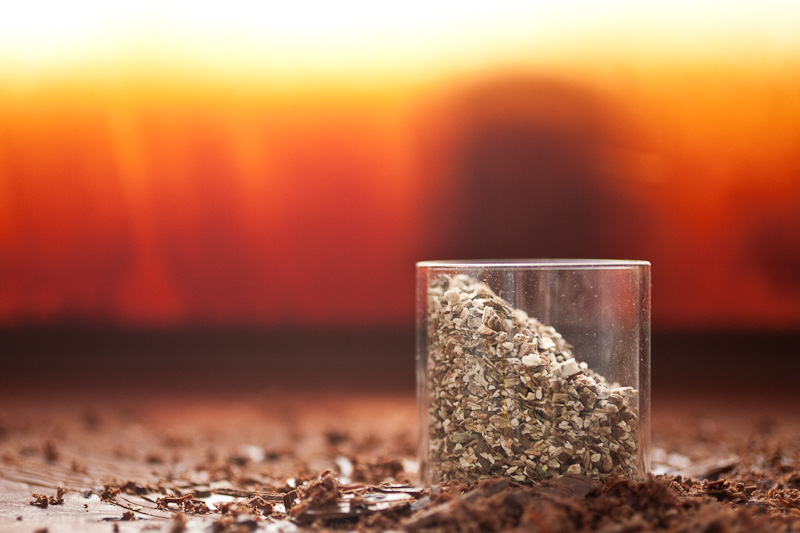
The raw chicory tasted as described; sort of warm and earthy and indescribably bittersweet. The roasted chicory tasted like mild, unbitter sweet coffee. Because the roasted chicory was relatively more common, I opted to go with the raw chicory because I found it more interesting. I used about 100g of raw chicory liquid extract, which meant adjusting the agar content of the chicory pudding appropriately. It turned out really delicious though. I’m proud of it.
The dandelion root also had a bitter, sweet, earthy taste to it. I’ve never tasted all of these root ingredients before, so I really enjoyed getting to play with them and learn about them. The Dandelion root is candied in caramelized sugar and vanilla bean.
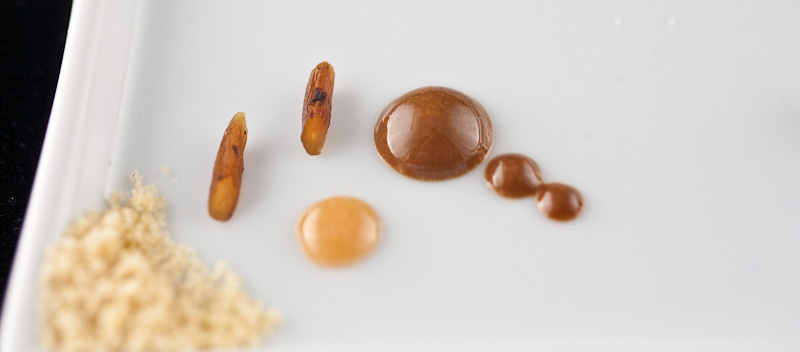
The final assembled dish is beautiful and totally awesome; I had so much fun making this, and feel so proud of how it turned out. The backspray from the paint gun has left my dining room a bit of a mess, but it was totally worth it. When one taps on the outside of the chocolate square, it cracks like a soft creme brulee and the inner honey/chocolate mixture oozes out onto the plate and into all the garnishes.
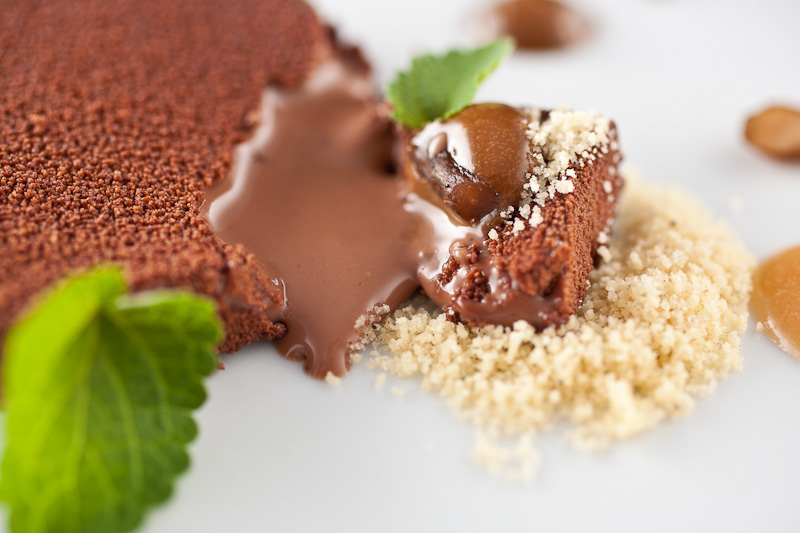
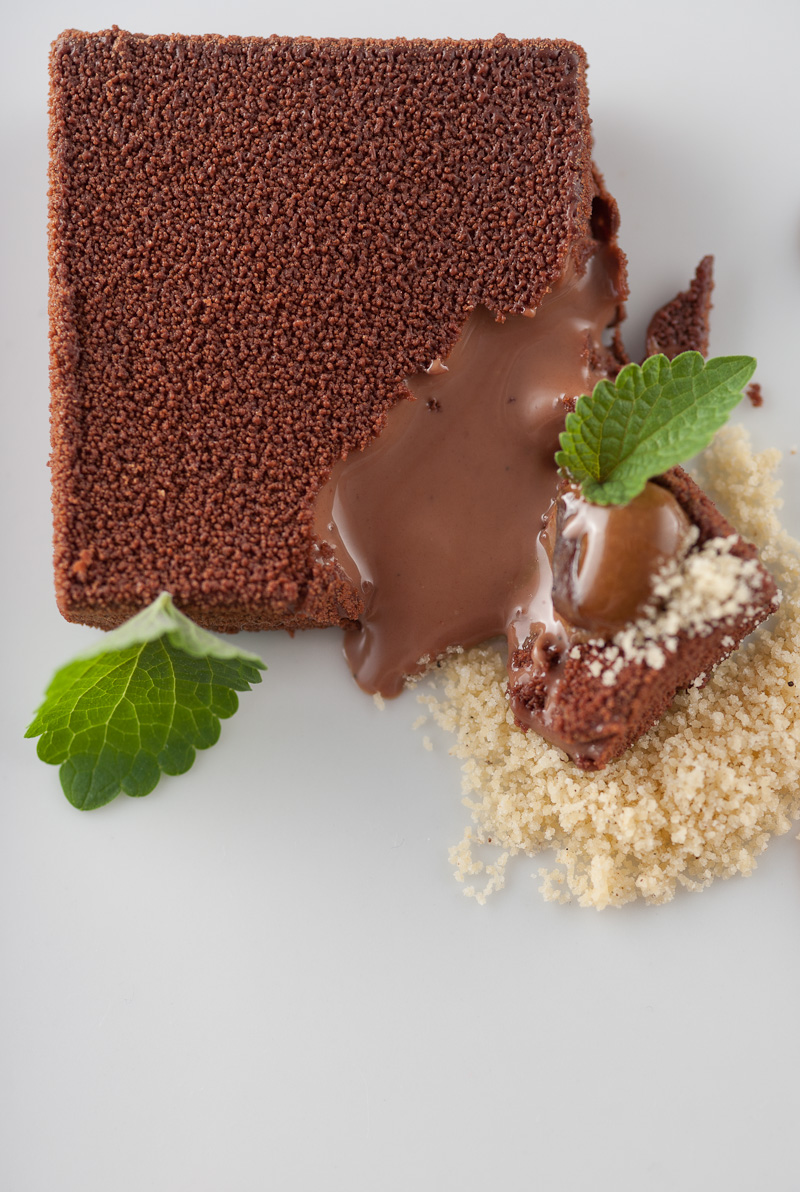
How did you get both sides sprayed without removing chocolate when flipping it over?
Hi Norma!
The trick was to spray the squares once with chocolate, then return them to the freezer to allow the top coat to set. Then, an hour later or so, I took them out and flipped them; the outer chocolate was firm so it stayed intact when they were flipped…then I sprayed the ‘bottoms’ and put them back in the freezer to set again.